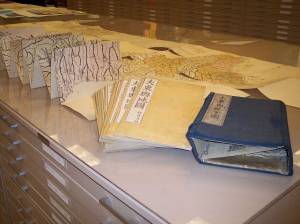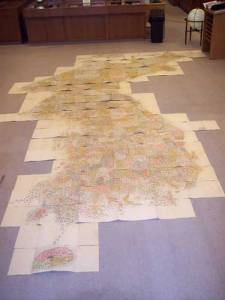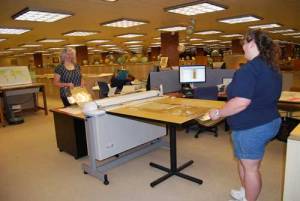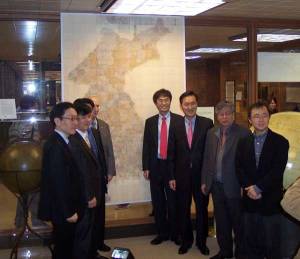One such image of a man carrying a crate, as seen below, was simply labeled ‘Indo-China.’
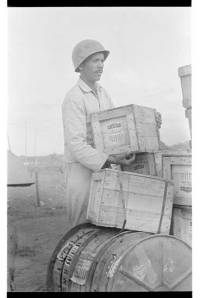 |
But the clues didn’t end there. We could just make out a stamp on the side of a crate that says ‘Burgess Battery Co. Freeport, IL.” A quick search uncovered that the Burgess Battery Co. was founded by Charles F. Burgess, founder of the University of Wisconsin – Madison Department of Chemical and Biological Engineering. Burgess also founded the Madison-based Rayovac Corporation (formerly French Battery Company), one of the country’s largest battery producers. Burgess developed flashlight and radio batteries in the early 1900s, with which, under military contract, he supplied the troops during World War I, suggesting that Burgess possibly continued military contracts in the future. Burgess left UW-Madison in 1913 and founded Burgess Battery Company in 1917, which he eventually moved from Madison to Freeport, Illinois in 1925 to start a new division.
Suddenly, an image of a man carrying a crate in Indochina became a much more complex story – one with Wisconsin ties!
To see the full record for the image, visit our Digital Collections Asia and Middle East portal
Sources:
Harry S. Truman: “Statement by the President Upon Issuing Order Providing for the Administration of the Mutual Defense Assistance Act.,” January 27, 1950. Online by Gerhard Peters and John T. Woolley, The American Presidency Project.
University of Wisconsin-Madison College of Engineering. (1996). ChE Funder also helped spur battery industry, Perspective, Vol. 23.
-Susan Dykes
